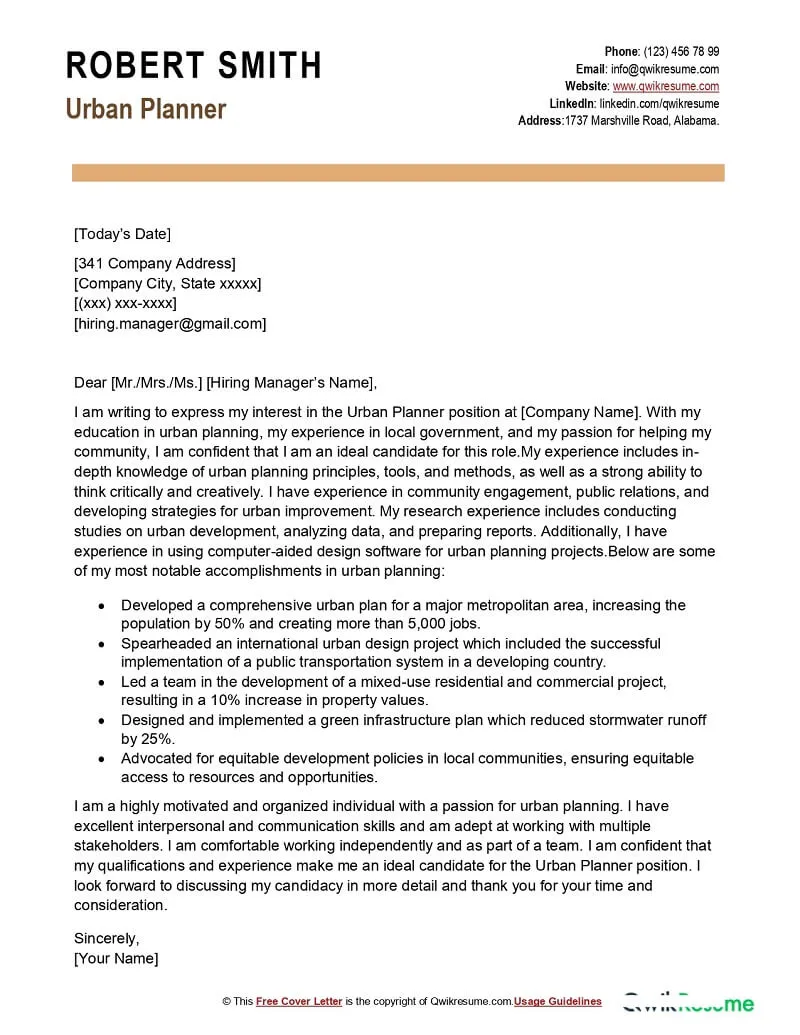Crafting a Compelling City Planner Cover Letter
A well-crafted city planner cover letter is your first opportunity to make a strong impression on potential employers. It’s more than just a formality; it’s a crucial tool in your job application arsenal. This guide will walk you through the essential steps to create a cover letter that not only showcases your skills and experience but also grabs the attention of hiring managers and sets you apart from other applicants. By following these guidelines, you can significantly increase your chances of landing an interview and ultimately securing your dream city planning position. The goal is to create a document that is professional, persuasive, and tailored to the specific job you are applying for.
Understanding the Purpose of a Cover Letter
The primary function of a city planner cover letter is to introduce yourself, highlight your relevant skills, and express your interest in a specific position or organization. It’s a chance to go beyond the information presented in your resume and provide context, explain your career goals, and demonstrate your understanding of the role and the employer’s needs. A cover letter allows you to tell a story about your professional journey, connecting your past experiences to the requirements of the job and showcasing how you can contribute to the organization’s success. It’s your opportunity to make a personal connection and convince the hiring manager that you are the best candidate for the job.
Highlighting Your City Planning Skills
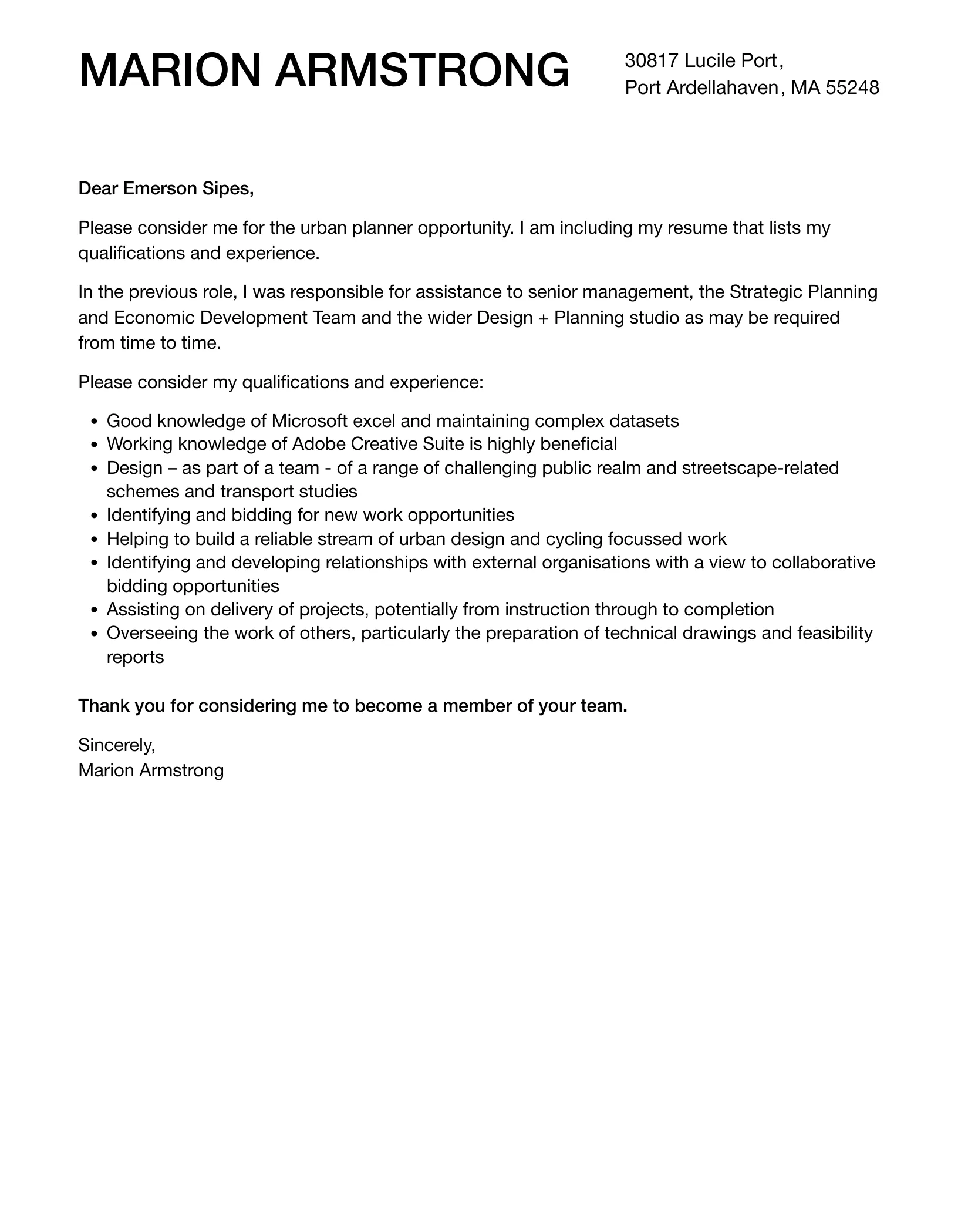
City planning requires a diverse skill set, so your cover letter should clearly showcase your abilities. Focus on the skills most relevant to the specific job you’re applying for. This includes technical skills, such as proficiency in GIS software, urban design principles, and knowledge of zoning regulations. But don’t overlook the soft skills that are essential for success in this field. Highlight your communication, problem-solving, and project management abilities, as these are crucial for collaborating with stakeholders, analyzing complex data, and implementing effective urban plans. By presenting a balanced view of your technical and soft skills, you’ll demonstrate your ability to excel in a city planner role.
Researching the Hiring Organization
Before you start writing, thoroughly research the organization you’re applying to. Understand its mission, values, and recent projects. Visit their website, read news articles, and check their social media presence to gain insights into their goals and priorities. Tailoring your cover letter to the organization demonstrates your genuine interest and shows that you’ve taken the time to understand their needs. Mentioning specific projects or initiatives that resonate with you shows you’ve done your homework and that you’re a good fit for their team. This targeted approach makes your application more impactful and increases your chances of getting noticed.
Key Components of an Effective City Planner Cover Letter
Contact Information and Salutation
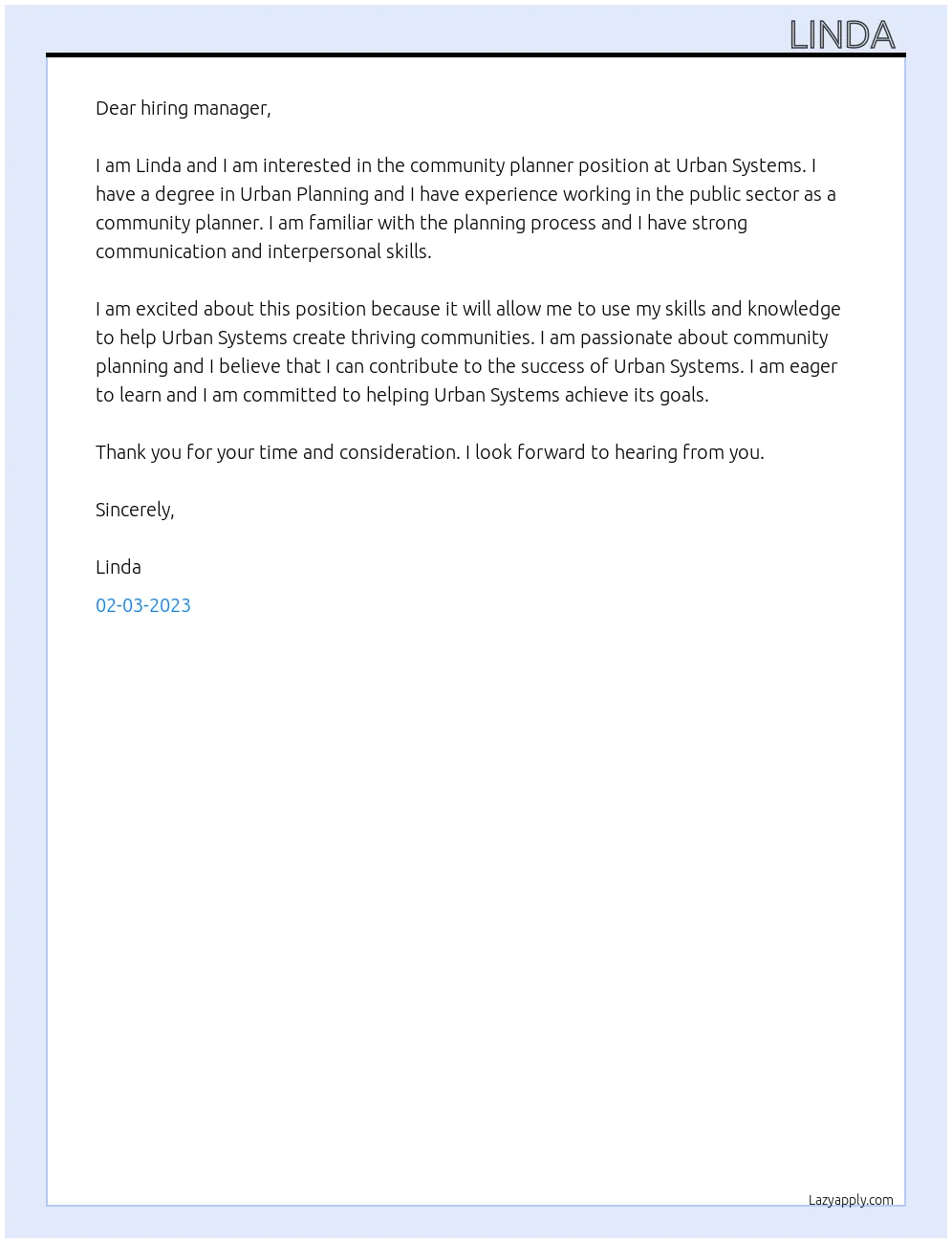
Start your cover letter with your contact information: your full name, phone number, email address, and professional social media profiles, such as LinkedIn. Then, address the hiring manager by name if possible. Use a professional salutation, like “Dear Mr./Ms. [Last Name].” If you can’t find the hiring manager’s name, use a general salutation such as “Dear Hiring Manager.” Avoid generic greetings like “To Whom It May Concern,” as these show a lack of personalization and effort.
Writing a Strong Opening Paragraph
Your opening paragraph is your chance to grab the reader’s attention. Start with a concise statement of your interest in the position, mentioning where you saw the job posting. Briefly highlight your most relevant qualification or experience that aligns with the job requirements. Show enthusiasm and confidence from the beginning. Avoid generic introductions; instead, make it clear why you’re excited about the specific opportunity and what value you can bring to the organization. A compelling opening paragraph sets the tone for the rest of your cover letter and encourages the reader to continue.
Showcasing Your Relevant Skills and Experience
The body of your cover letter should provide specific examples of your skills and experience. Use the job description as a guide to identify the key requirements and tailor your examples accordingly. Instead of just listing your responsibilities, describe your accomplishments and the impact you made in previous roles. Quantify your achievements whenever possible. Use action verbs to describe your responsibilities and accomplishments, and explain how you used your skills to solve problems, improve processes, or achieve specific outcomes. Demonstrate your understanding of the role, the organization’s goals, and how your skills can contribute to their success.
Quantifying Achievements with Data
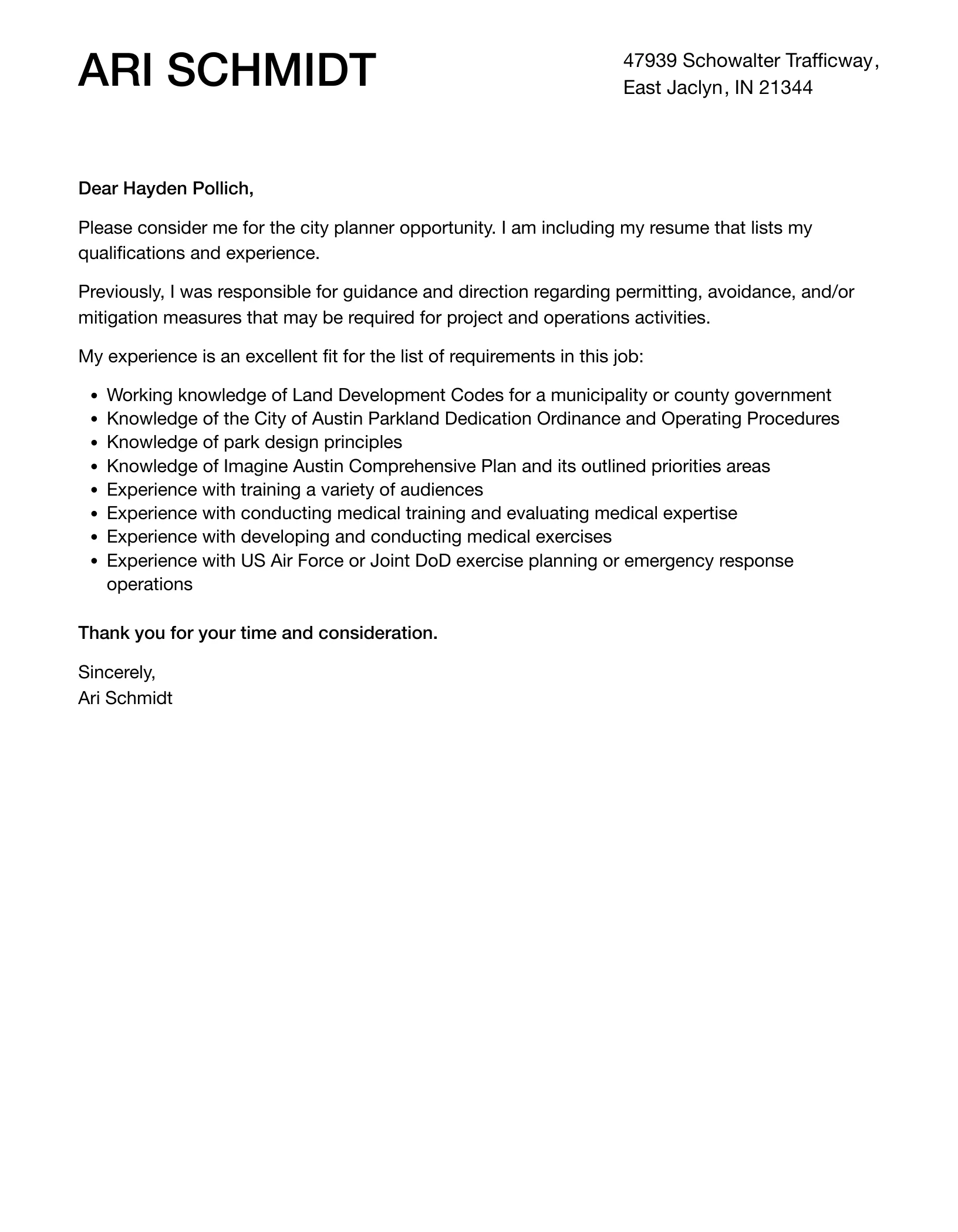
Whenever possible, quantify your achievements with data and numbers. Instead of saying, “Improved project efficiency,” state, “Increased project efficiency by 15% through the implementation of new project management software.” Such quantifiable results demonstrate your impact and provide concrete evidence of your skills and experience. Quantifying your achievements makes your cover letter more persuasive and credible. It allows the hiring manager to easily see the value you can bring to their organization. Use numbers, percentages, and specific metrics to showcase your successes.
Demonstrating Knowledge of Urban Planning Principles
In addition to showcasing your skills, your cover letter should demonstrate your knowledge of core urban planning principles. Show your understanding of zoning regulations, land use planning, transportation planning, and sustainable development practices. Reference specific projects or initiatives where you applied these principles, and explain the outcomes of your work. This demonstrates your theoretical knowledge and practical application, illustrating that you can bring a comprehensive understanding of urban planning to the role. Ensure that you use correct industry terminology to show your competence and expertise.
Expressing Enthusiasm for the Role and Organization
Express your genuine enthusiasm for the position and the organization. Explain why you are interested in this specific opportunity and what excites you about their work. Show that you’ve researched the organization and are aligned with their mission and values. Mention specific projects or initiatives that you admire and explain why they resonate with you. Your enthusiasm can make a significant difference, as it shows you are not just seeking any job, but one that aligns with your interests and career goals. This enthusiasm makes you a more memorable candidate.
Concluding with a Call to Action
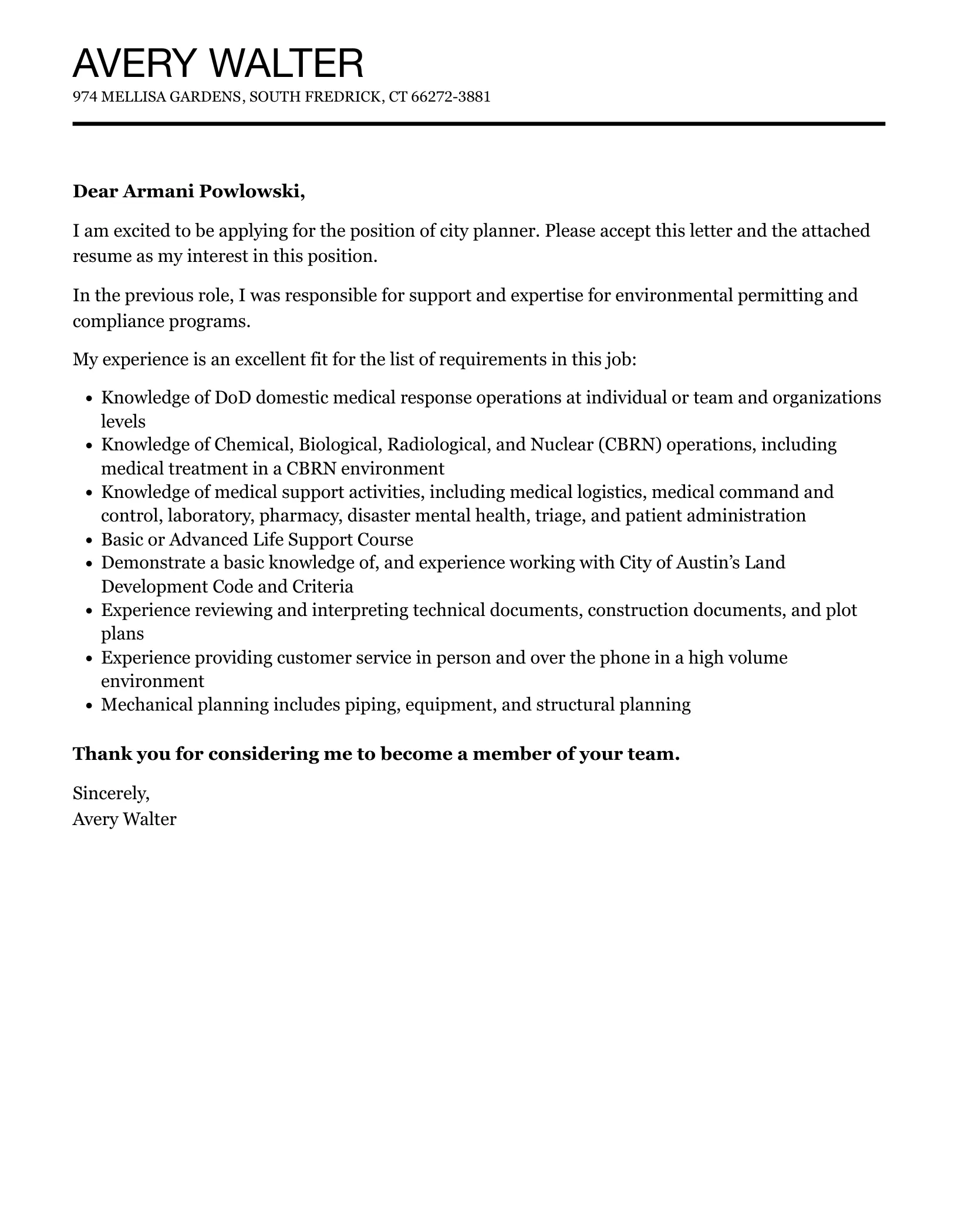
End your cover letter with a clear call to action. Reiterate your interest in the position and state that you are eager to discuss your qualifications further. Thank the hiring manager for their time and consideration. Provide your contact information again, and indicate your availability for an interview. Close with a professional closing, such as “Sincerely” or “Best regards,” followed by your full name. A strong call to action ensures that you keep the door open for further steps in the hiring process.
Formatting and Proofreading Your Cover Letter
Choosing the Right Font and Format
Choose a professional and readable font, such as Times New Roman, Arial, or Calibri. Use a font size between 10 and 12 points. Use standard business letter formatting with one-inch margins and single or 1.15 line spacing. Ensure your letter is well-structured with clear headings and paragraphs. This makes it easy for the hiring manager to read and digest the information. A clean and well-formatted cover letter demonstrates professionalism and attention to detail.
Proofreading for Errors
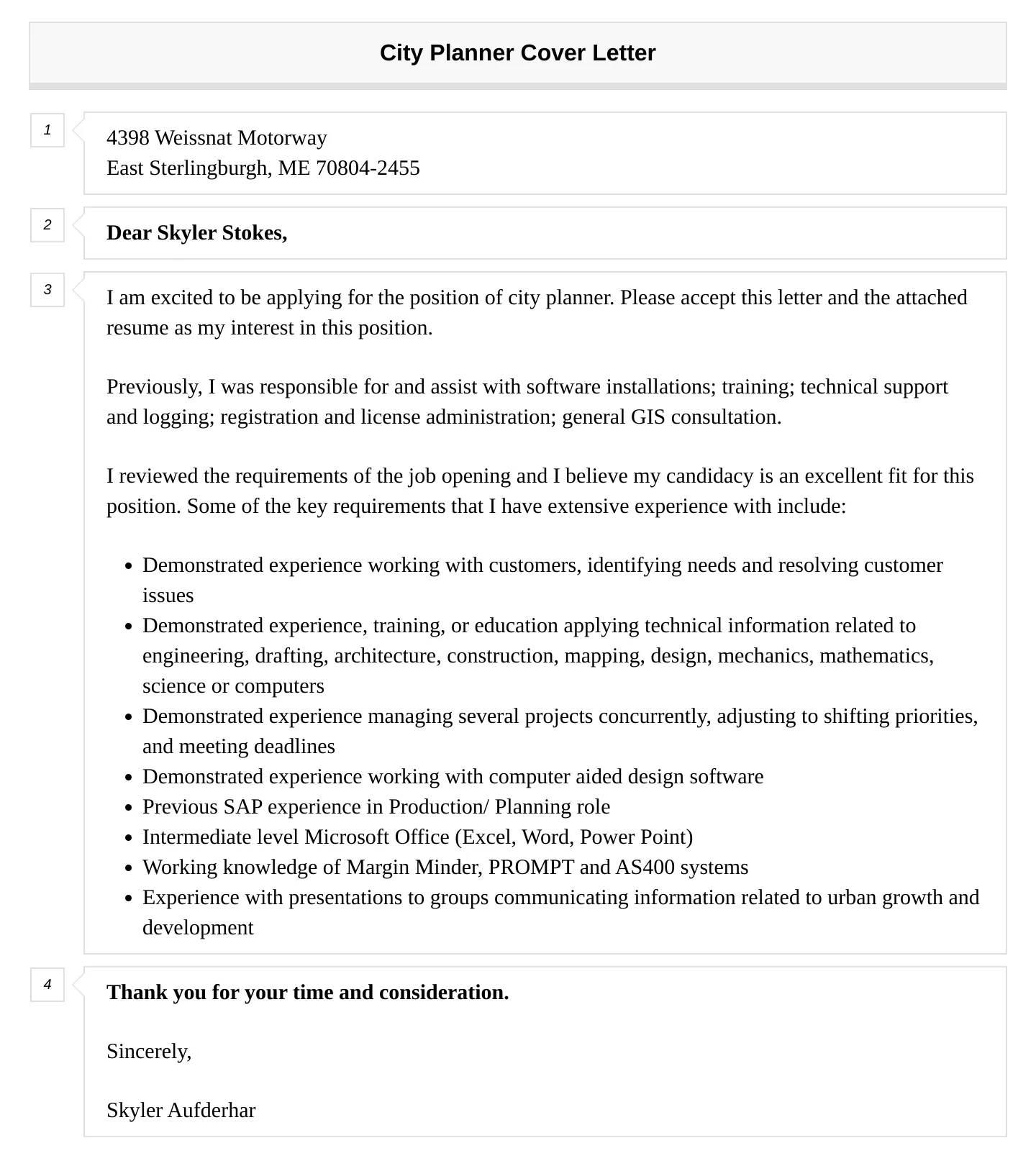
Proofread your cover letter carefully for any grammatical errors, spelling mistakes, or typos. Errors can undermine your credibility and make a negative impression. Use spell-check and grammar-check tools, but don’t rely on them entirely. Read your letter aloud to catch any awkward phrasing or unclear sentences. It’s also beneficial to have someone else review your cover letter; a fresh pair of eyes can often spot mistakes that you might miss. Take the time to ensure your cover letter is polished and error-free.
Tailoring Your Cover Letter for Each Application
Analyzing the Job Description
Carefully analyze the job description to understand the specific requirements and qualifications the employer is seeking. Identify the key skills, experiences, and qualities that are most important for the role. Tailor your cover letter to address these requirements directly, emphasizing the relevant skills and experiences you possess. Make sure your cover letter highlights your suitability for the specific position. This targeted approach increases your chances of getting noticed by the hiring manager.
Customizing Your Cover Letter
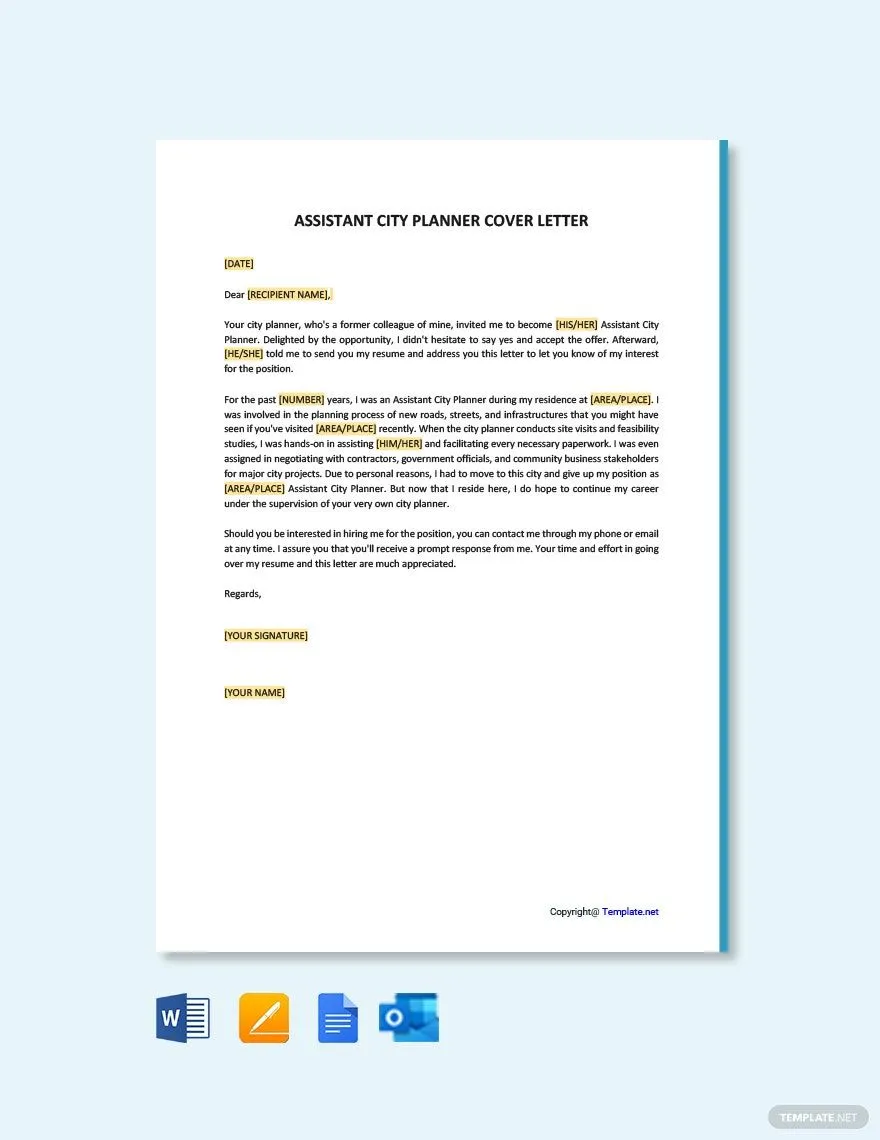
Don’t use a generic cover letter for every application. Customize your cover letter for each job you apply for. Show that you’ve taken the time to understand the organization and the specific requirements of the position. Modify your opening paragraph to reflect the specific job. Adjust your examples to showcase your relevant skills and experiences. This level of customization demonstrates your genuine interest in the opportunity and increases your chances of getting hired. Always update your letter with relevant information.
Reviewing and Refining Your Cover Letter
Before submitting your cover letter, review and refine it thoroughly. Ensure that your letter is well-organized, clear, and concise. Verify that you have addressed all the key requirements of the job description. Make sure your letter is free of errors, and that it accurately reflects your skills and experience. Getting feedback from a career counselor or a trusted colleague can be very helpful. They can provide valuable insights and help you identify areas for improvement. Continuously refine your cover letter to ensure it is as effective as possible.
